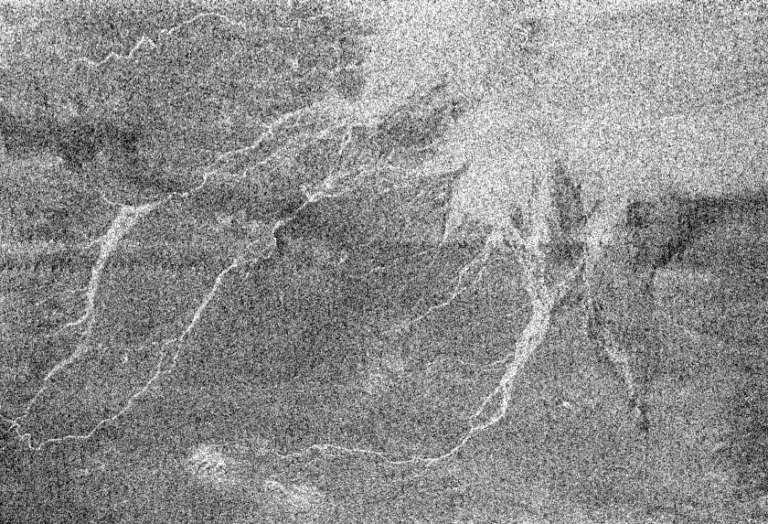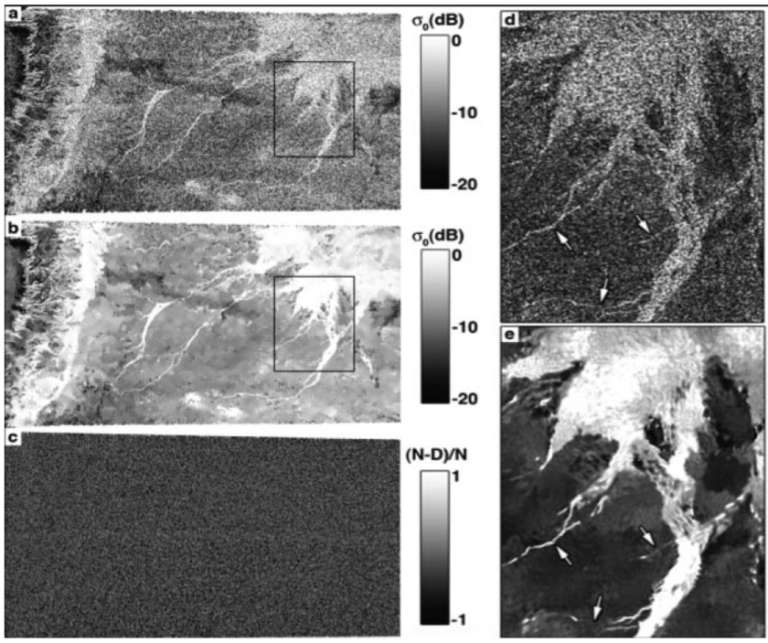Emily Lakdawalla • Mar 26, 2012
Notes from the Lunar and Planetary Science Conference: Making Cassini's radar images prettier
One of the more exciting talks last week was given by Antoine Lucas about his work with Oded Aharonson "denoising" Cassini radar images of Titan. Cassini's radar images are superior to the camera photos in revealing fine details and topography on Titan's surface, but they do suffer from a random noise component that makes the pictures look snowy.

When you zoom in on images like this, your eye finds tantalizing hints of detail, small structures among all the noise. But it can be very hard to be confident about whether those structures actually exist, and that they aren't products of our brain's desire to see patterns amid chaos.
Well, Antoine and Oded have developed a method for removing much of this noise. Here's a slide from their presentation, showing how well it works. The slide itself is blurry and with JPEG artifacts because they're not quite ready for prime time; they're submitting a paper on their work, and want to be sure they have dotted all their i's and crossed their t's before releasing an actual data product to the rest of the world. But once they are ready (hopefully, they said, later this year), they have promised to release denoised versions of the Cassini radar images on their website.

On the left is an example radar image (a). Below (b) is a denoised version. The image in (c) shows the residual, basically what was removed from (a) to produce (b). If the process really has only removed noise and not artificially brightened certain areas, the residual should look totally random. I do see hints of structure in the residual here and there, but not along the skinnier channels, which is a good thing. The most prominent structure in the residual is a horizontal band that is an artifact of the process by which the radar image was produced in the first place, so it's actually good to see that band removed from the image. On the right in (d) and (e) are a detail view of the image, showing fine structures of river channels made more visible in the denoised version.
Support our core enterprises
Your support powers our mission to explore worlds, find life, and defend Earth. You make all the difference when you make a gift. Give today!
Donate

 Explore Worlds
Explore Worlds Find Life
Find Life Defend Earth
Defend Earth

